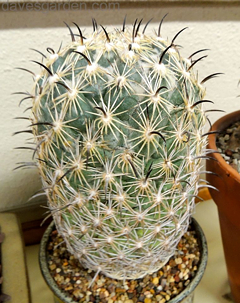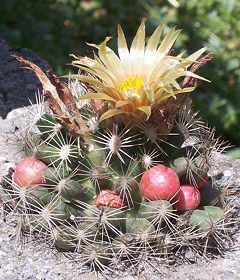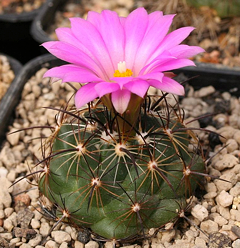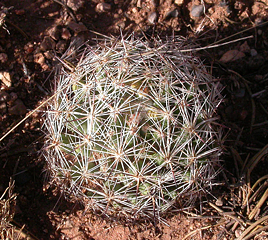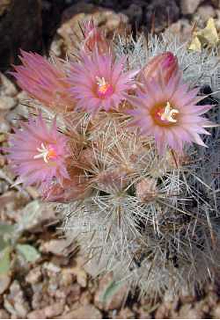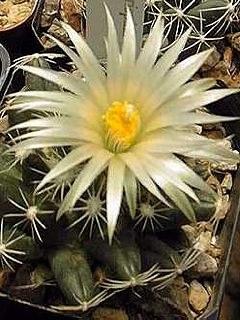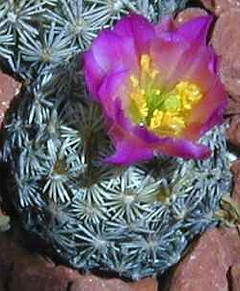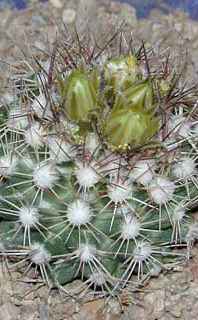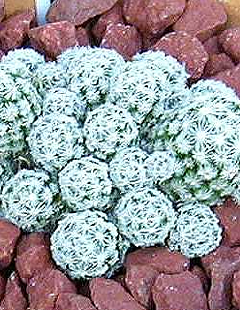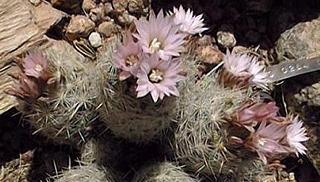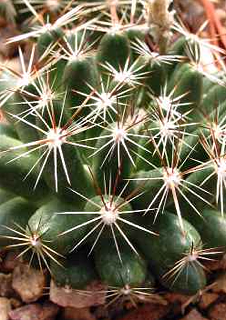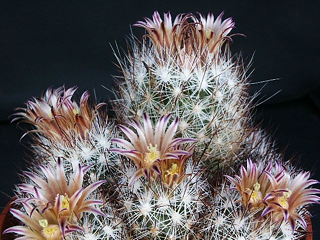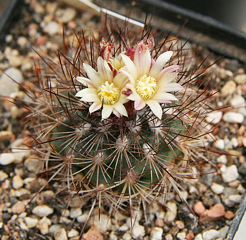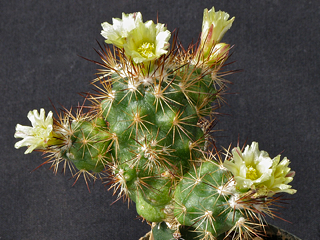Submitted by: Jim Tanner
Coryphantha (from Greek, “flowering on the top”), or beehive cactus, is a genus of small to middle-sized, globose or columnar cacti. The genus is native to arid parts of Central America, Mexico, through Arizona, New Mexico, and western Texas and north into southwestern, central, and southeastern Montana. With its two subgenera, 57 species and 20 subspecies, it is one of the largest genera of cactus.
There are four characteristics that distinguish Coryphantha from other cacti.
1. Their bodies do not have ribs, just tubercles.
2. The flowers form at the top of the plant (the apex or growing end of the stem).
3. The tip (podarium) of each flowering tubercle has three parts, the spiny areole, the groove and the axil. Without the groove it is not a Coryphantha.
4. The seed coat (or testa) has a net-like pattern (reticulate).
More than many other cacti, the Coryphantha change in their appearance over their lifespan. The presence or absence of a central spine is not indicative of the genus, even in fully adult plants.
Escobaria is a small North American genus from southwestern USA down to northern Mexico. It is closely related to Coryphantha and somewhat more distantly to Mammillaria.
Escobaria have small, funnel-shaped flowers in the spring and summer. The flowers are generally yellow, pink or brownish. In general Escobaria are very rot prone. They should be underpotted, be in a container with excellent drainage, and be watered carefully. All of them can take some frost.
Acharagma is a genus of two small cacti species from Coahuila and Nuevo Leon in northern Mexico.
These plants have globose bodies less than 3 inches in diameter and no more than 3 inches high. They may be somewhat cylindrical in shape and typically grow as individuals, but may put off several offsets from the bottom. These plants have tubercles and flower from the top, which is similar to both Escobaria and Coryphantha, however, they do not have a groove from the areole to the axis. In fact, the name Acharagma means in Greek “no groove” [a (no) – charagma (groove)]. The flowers are at the stem tips, and range from cream to pink and yellow. The spines are quite thick and can obscure much of the stem and are less than an inch in length. The fruits are smooth little pods that are green to purple colored.
The genus is of relatively recent creation, the species originally being described as part of Escobaria, although recognized as a separate section by Nigel Taylor in 1983, and raised to a genus by Charles Glass in 1998.
